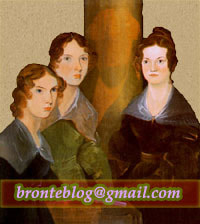Anyone familiar with the source material – Emily Brontë’s iconic, heart-rending Gothic novel of the same name – could be forgiven for feeling a little confused. But the apron-wearing Hareton (Matthew Churcher), smiling at the audience like a cross between Martha Stewart and a Mills & Boon cover model, sums up the vibe of Rice’s ironic, tongue-in-cheek, folk-rock adaptation. [...]
Horrified, Rice wrote her Wuthering Heights in the style of a Greek tragedy, as a means of exploring the intergenerational consequences of abuse and xenophobia. In reality though, the production can’t escape its own self-aware humour and suffers from something of an identity crisis. It might as well be an ironic, thoroughly modern comedy right from the prologue when the hapless Mr Lockwood (the superb Sam Archer), in a coat-flapping display of slapstick, slams into Heathcliff’s front door.
The production is self-referential even in how it evokes its setting. Birds and butterflies are made of fluttering books on sticks, while the Wuthering Heights farmhouse is represented by a flat, front door and a window on castors (Vicki Mortimer’s set design). There is a hilarious literal depiction of the moor’s “screaming winds”. The Yorkshire Moors themselves are personified as a singing, dancing Greek chorus led by Nandi Bhebhe, wearing a brambly headdress and functioning as a sort of Mother Earth-meets-Oprah voice of conscience. She clucks consolingly as she dresses Heathcliff for Christmas, waving away his hesitations with a kindly wriggle of her patchwork bustle skirt (Mortimer’s costuming), reminding him that he must prove himself.
The chorus complains that there are too many characters with similar-sounding names, and other cast members helpfully walk on with chalkboards to clarify. The chalkboards make frequent reappearances, including when the town physician, Dr Kenneth (the delightful T. J. Holmes, also doubling as the band’s cellist), prances on stage in a top hat and rubber gloves to explain the spate of recent deaths among the main characters.
The childhood versions of Heathcliff, Hindley and Catherine are rendered as puppets (puppetry directed by John Leader), before growing into their adult human selves. There are no brooding eyes or pensive sighs from Stephanie Hockley’s energised, devilish Catherine. She’s a wild-haired, pouting teenager tottering around in platform heels, shrieking and grimacing like a poltergeist. In the production’s feted “drop mic” moment, an industrial floor fan is conspicuously placed in front of her so that she can wail into a microphone, hair blowing out, rockstar-style. It’s hard to understand exactly what Heathcliff sees in this Catherine, but perhaps it underscores the point of their lonely co-dependency.
The dandyish siblings Isabella Linton (Rebecca Collingwood) and her brother, Edgar (Archer again), are highlights, capering about in a froth of pink bows and lace. They don’t walk or dance normally like the rest of the cast but traverse the stage by twirling and leaping in an endless foppish ballet. Archer transitions gracefully between the whimsical humour of his character’s early scenes and the grieving, dying father that Edgar later becomes. Collingwood also takes on the role of Isabella’s son, the limp Little Linton, as a pants role. A talented comic artist, Collingwood has some of the best lines in the show: as Isabella she giggles, “I like to slide down the banister – because it tickles my tuppence!” and as Little Linton she harrumphs, “It’s pyjama time!”
As well as being puppetry director, Leader also stars as Heathcliff. A dark, menacing presence, out of all the cast he is the only character bereft of whimsy, tapping into the toxic cruelty so prevalent in Brontë’s novel. Heathcliff is also a vehicle for Rice’s message on racism: he has a strong Caribbean accent and prominent dreadlocks, and rages that his lot in life would be different if he’d been born with straight hair and fair skin. “Go back where you came from,” sneers Hindley (Churcher again) at Heathcliff, before striking him in the face.
It’s not the first time Heathcliff has been multiracially cast in a “race-lift” version of Wuthering Heights: see, for example, Andrea Arnold’s 2011 film version, starring James Howson as cinema’s first black Heathcliff.
Brontë’s descriptions of Heathcliff were purposely ambiguous. He was a “dark-skinned gypsy in aspect and a little lascar”, she wrote, referring to the older English word for sailors from India or South-East Asia. But the treatment of racism in Rice’s production takes the vague otherness of Brontë’s Heathcliff – subtle enough to have him adopted and loved by Mr Earnshaw but ambiguous enough to unsettle Yorkshire society – and repaints it in a thoroughly modern and somewhat ham-fisted take. Staking most of the exploration of racism in Leader’s accent and a few stock lines, it works at a superficial level. But this production steers clear of the deeper, gut-wrenching complexities of racism – whether in Brontë’s day or now – and Rice’s well-intentioned message begins to feel as two-dimensional as the cut-out set of Heathcliff’s front door.
Ultimately, as clever as the musical’s whimsy is, it causes the production to become tonally disjointed, which is made worse by a trying three-hour run time. There is only so much folk-rock (Ian Ross’s composition and songs, which seem strangely indistinguishable from each other) and ironic self-aware jokes the production can manage before it undermines the exploration into intergenerational trauma and racism that Rice intended. (Chantal Nguyen)








0 comments:
Post a Comment